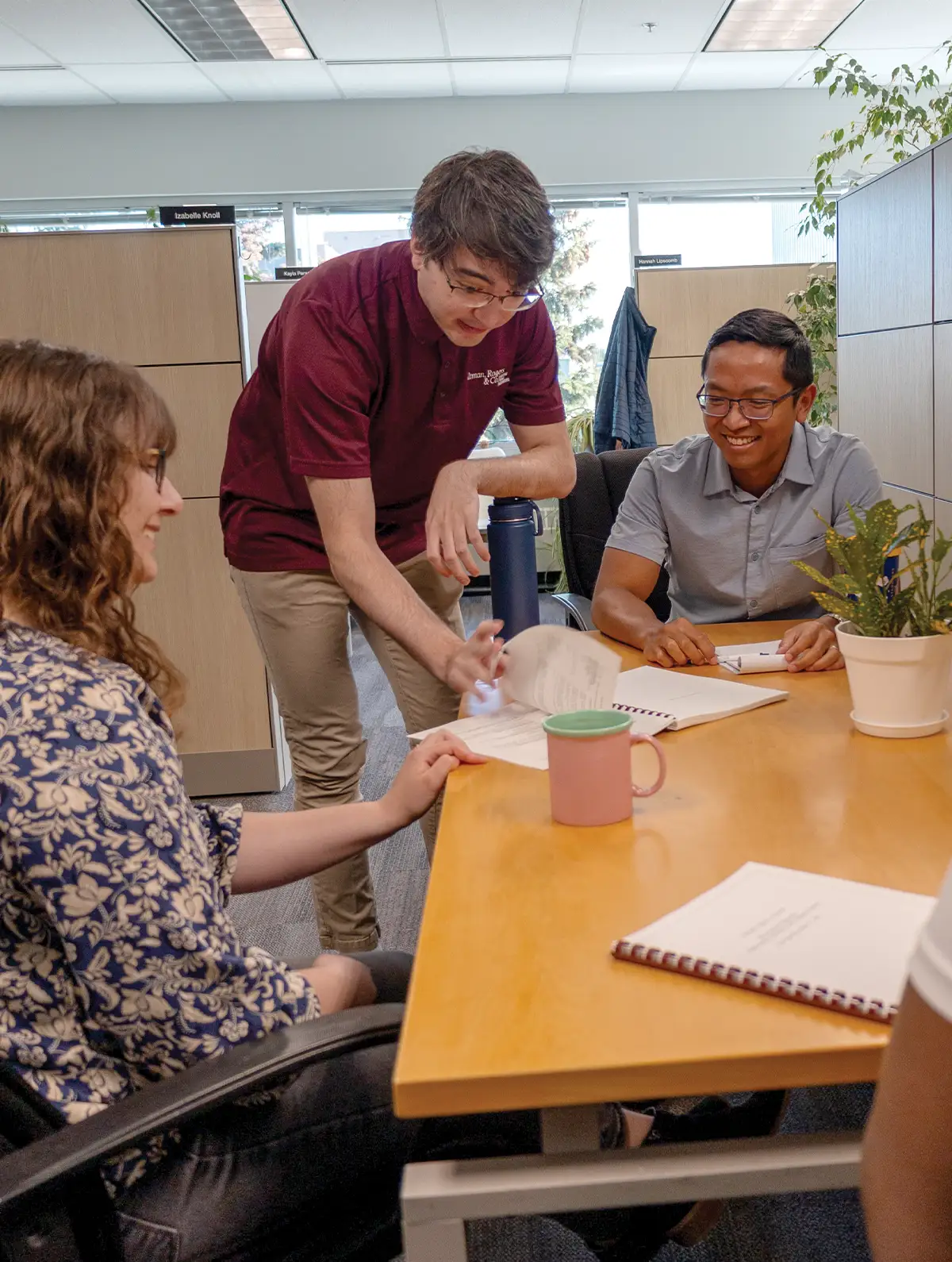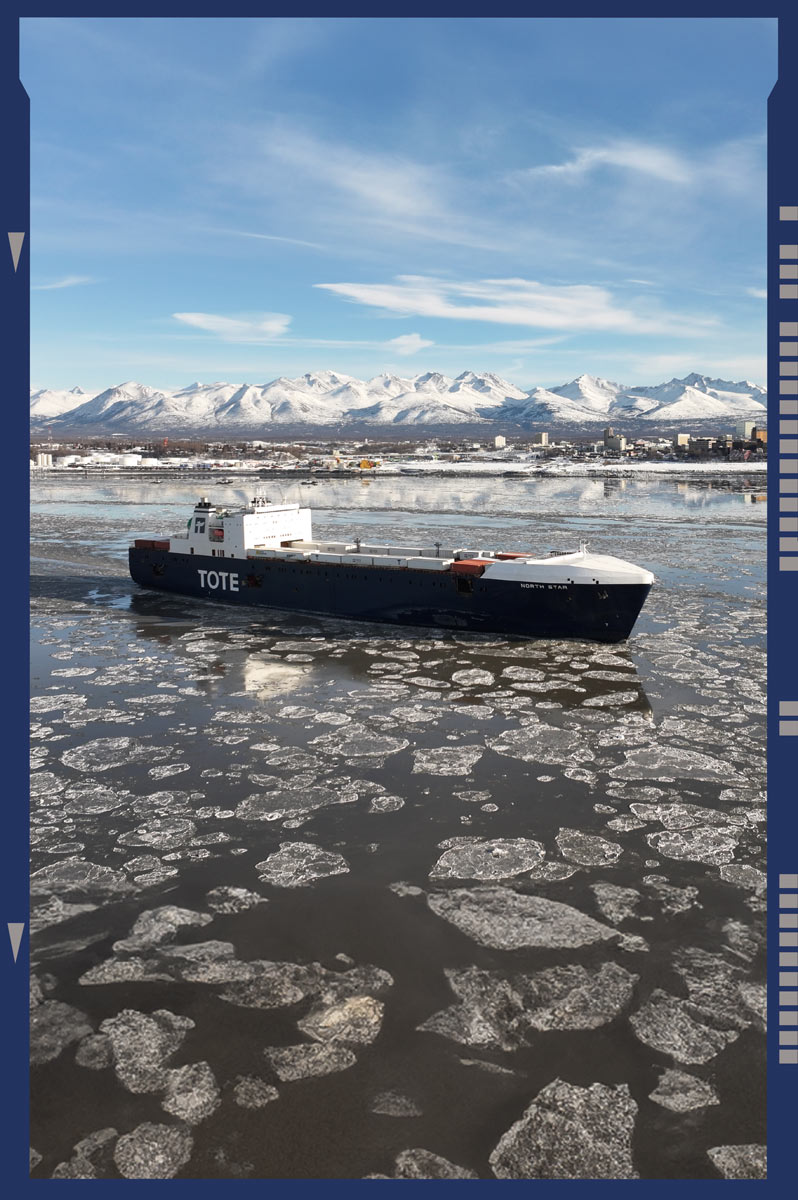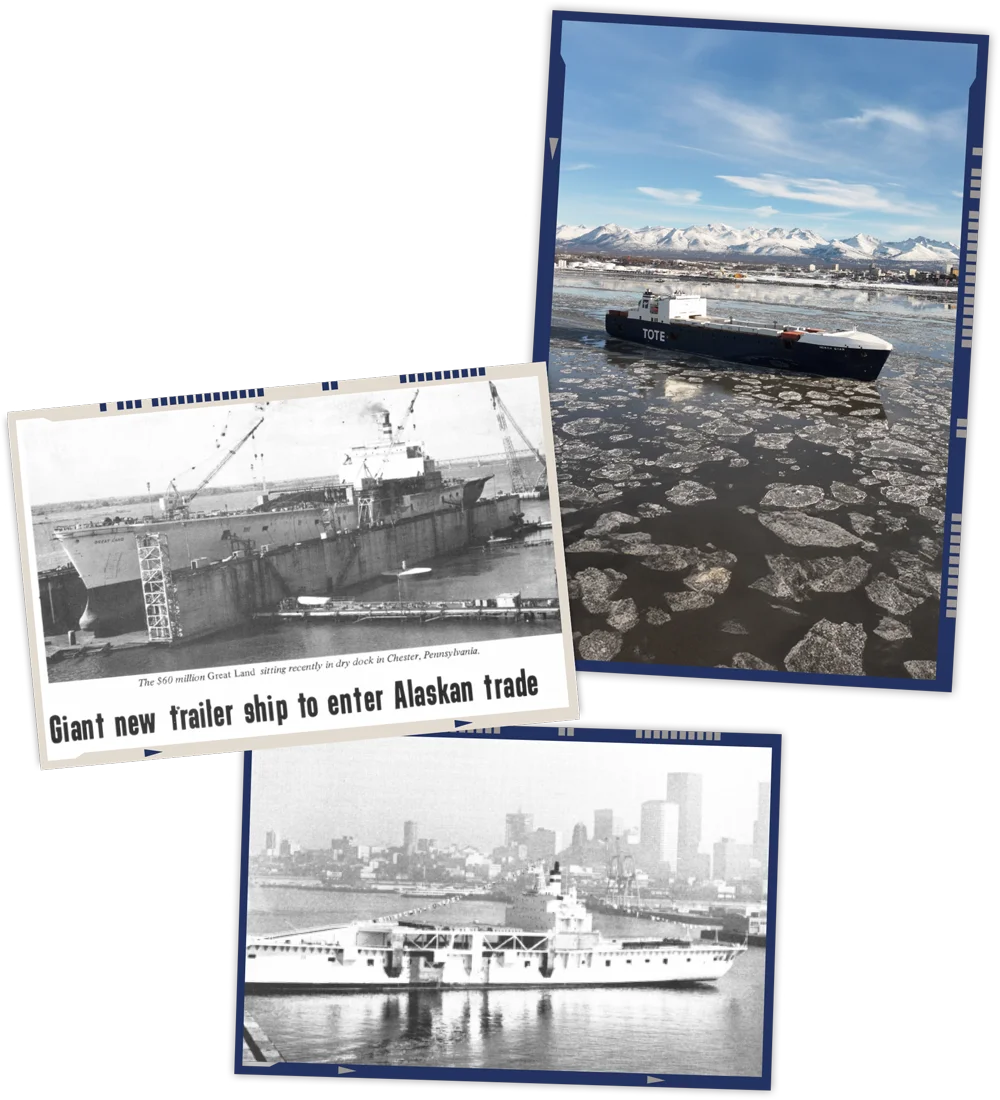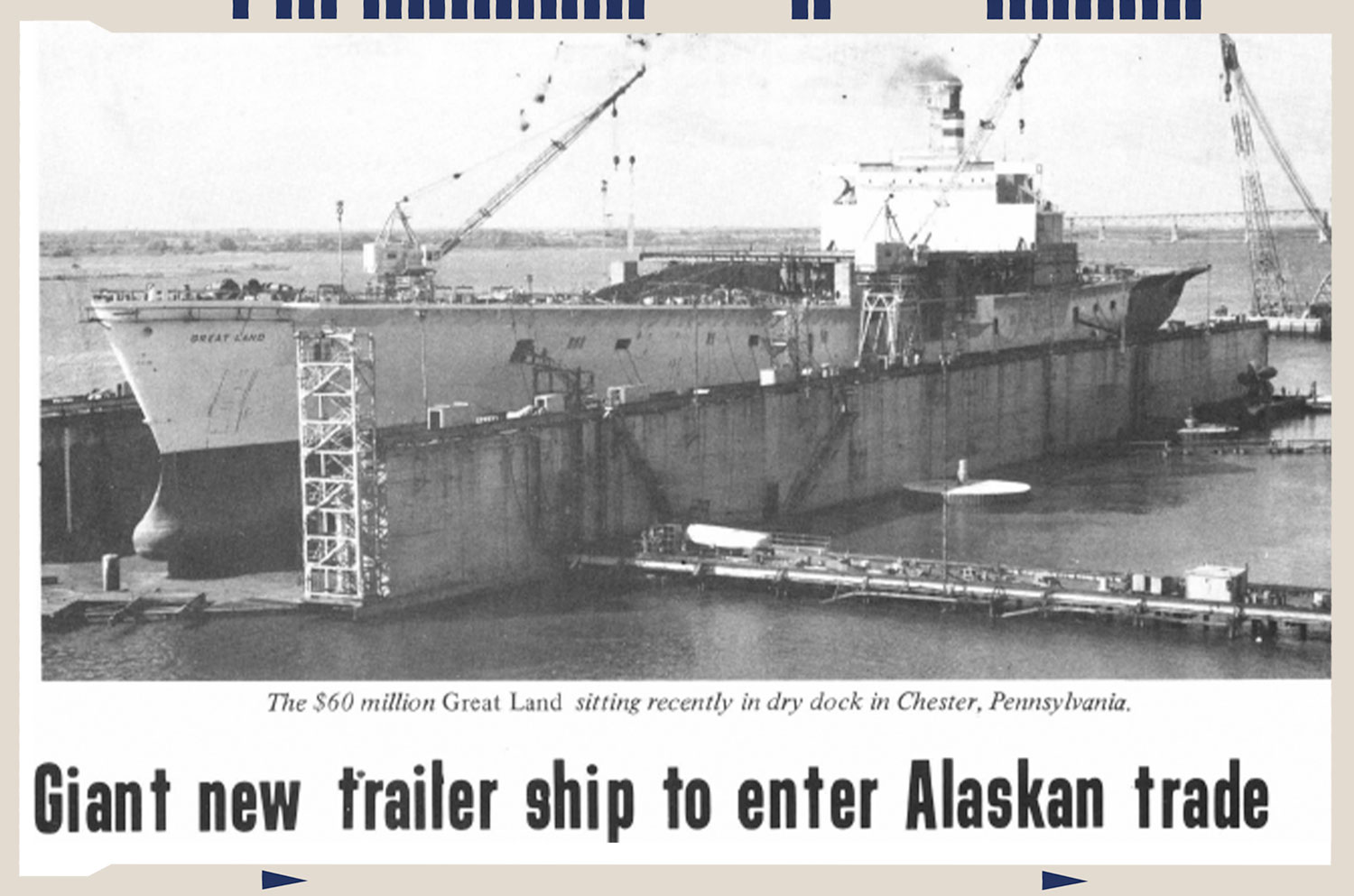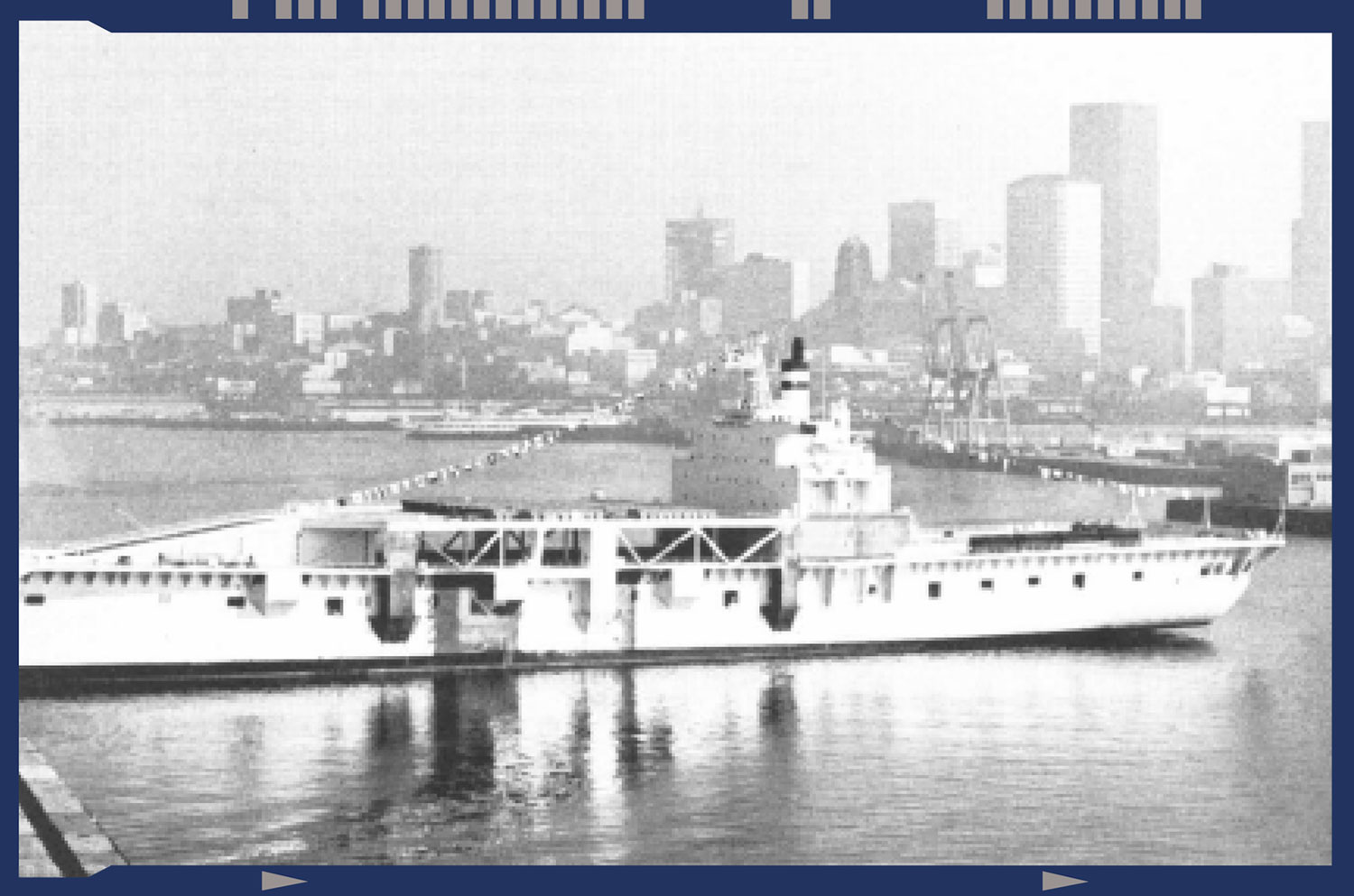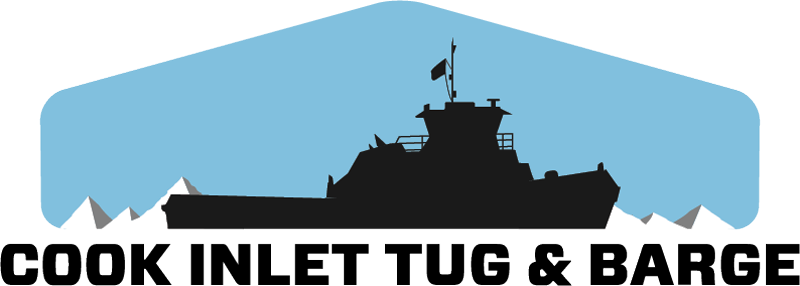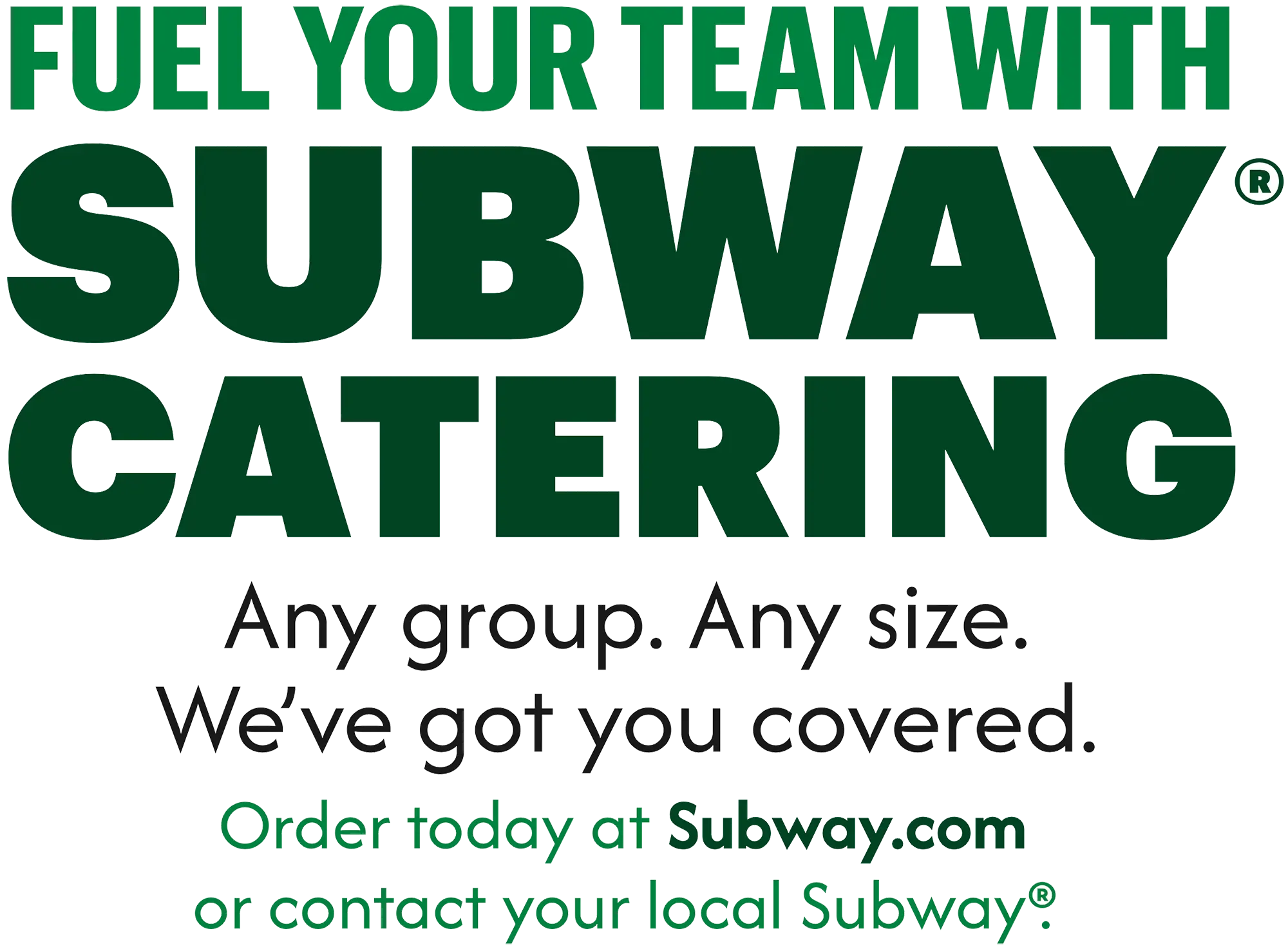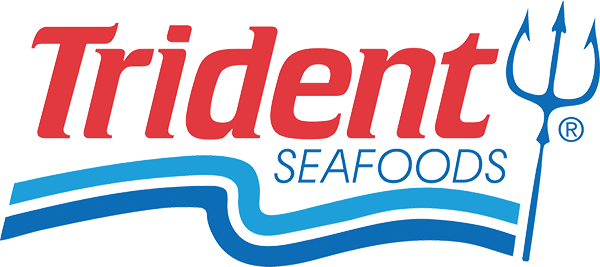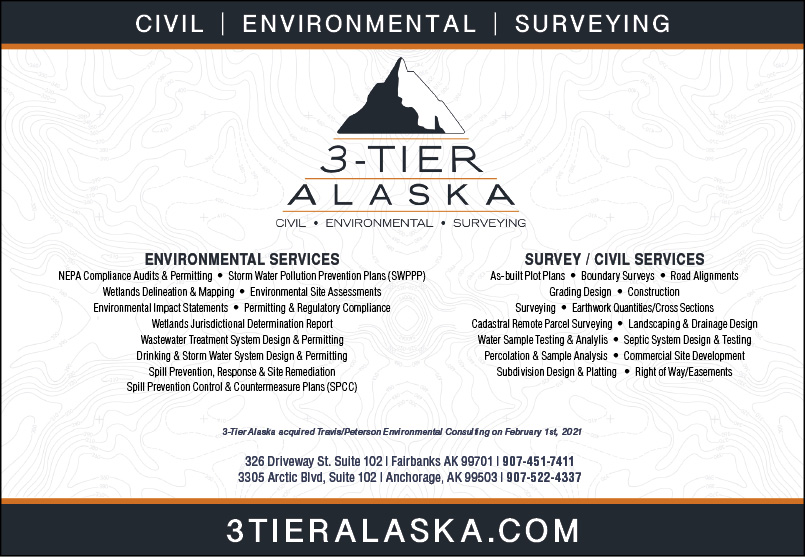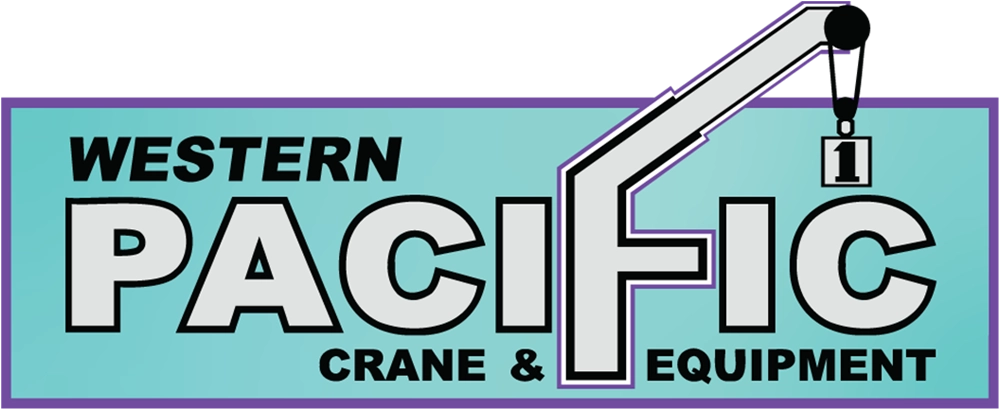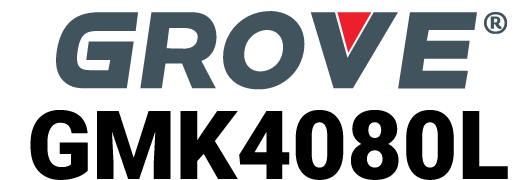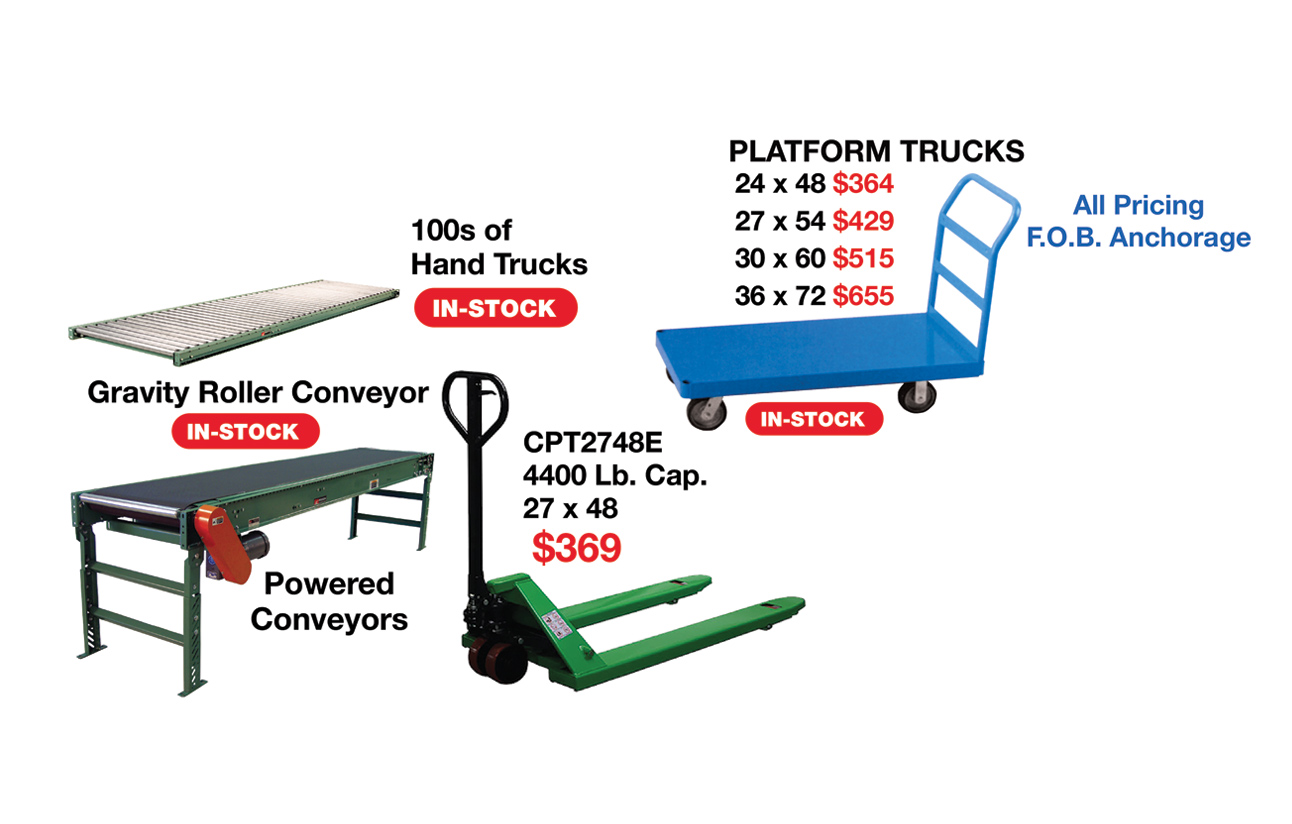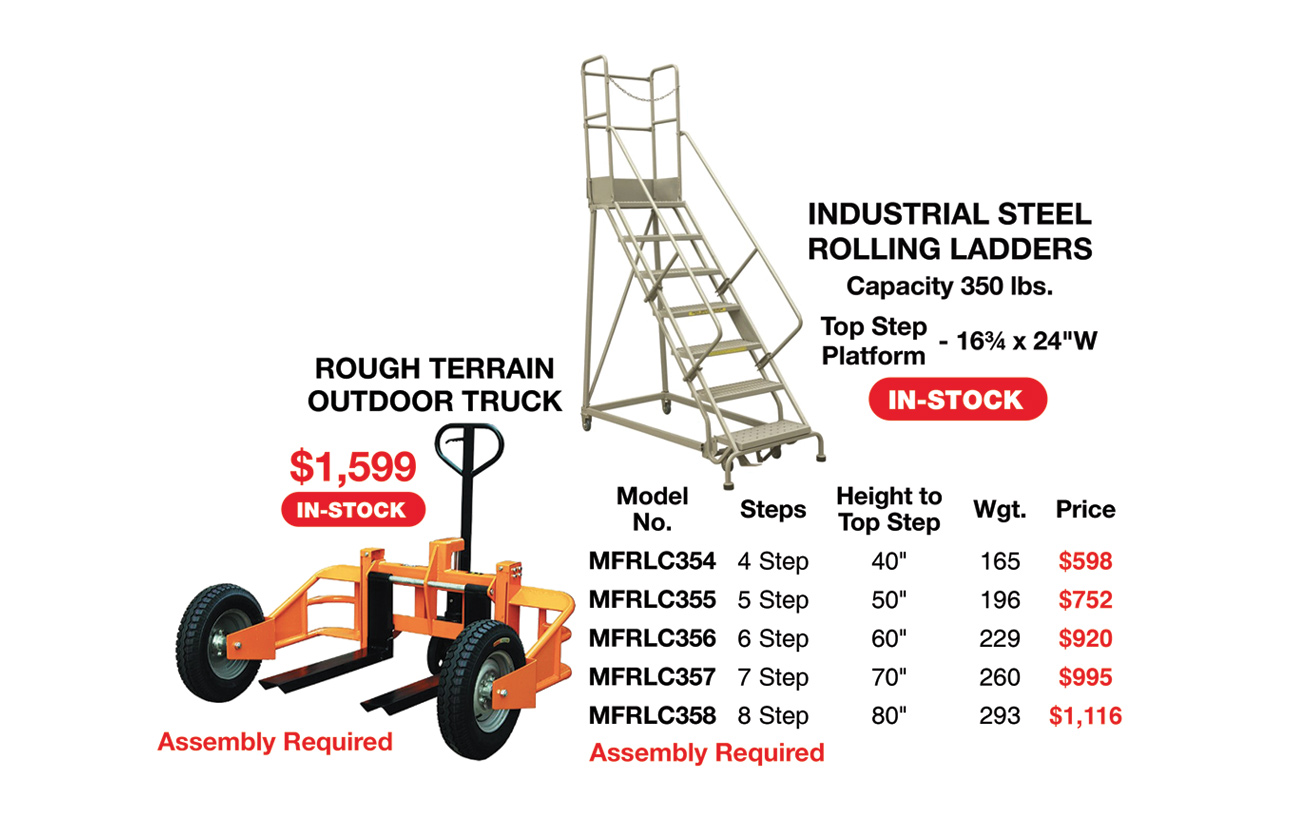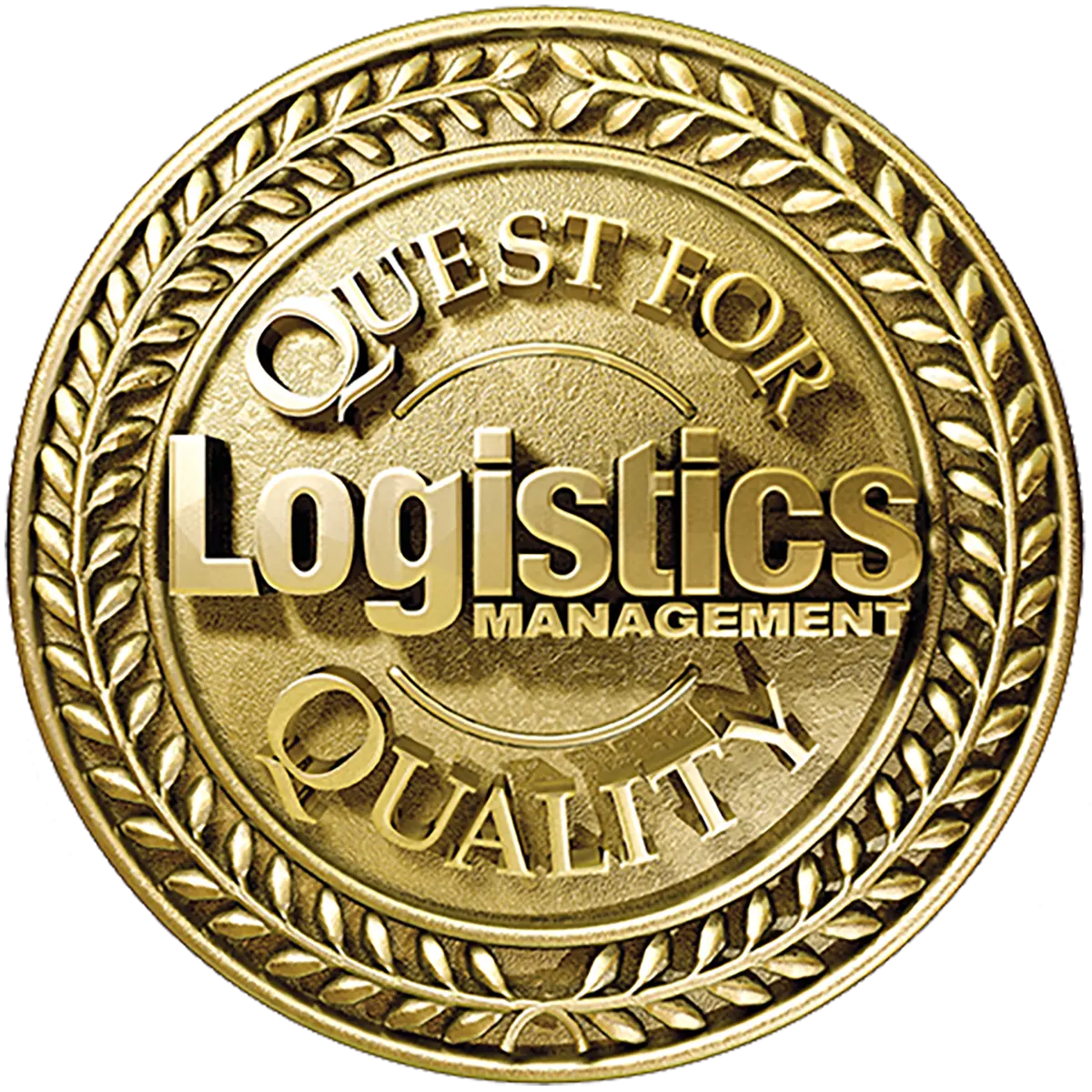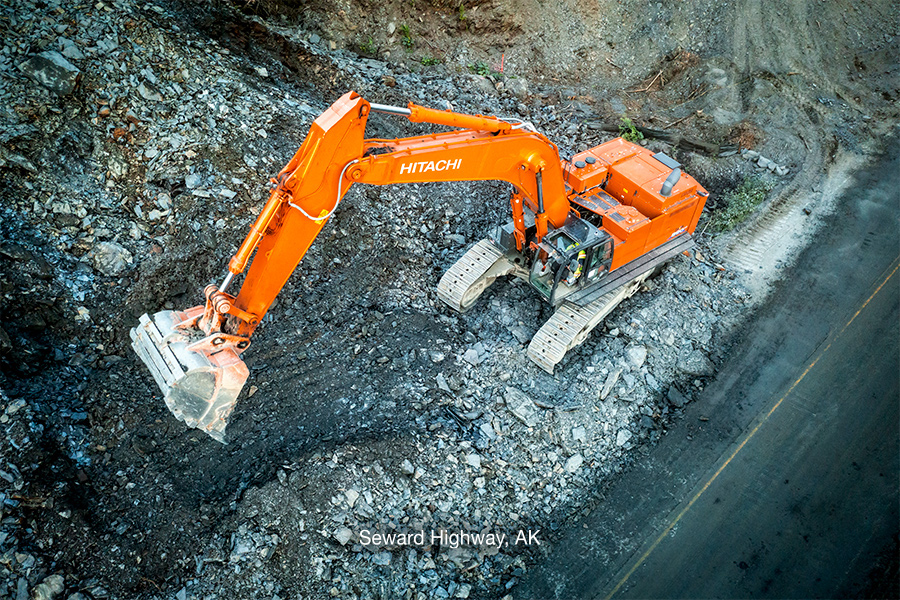
Our job is to keep you moving forward. Our machines are engineered with a “get it done” mentality and our After Sales Solutions are designed to keep you up and running.
The tougher your job gets, the easier it is to see we’re here when you need us most.
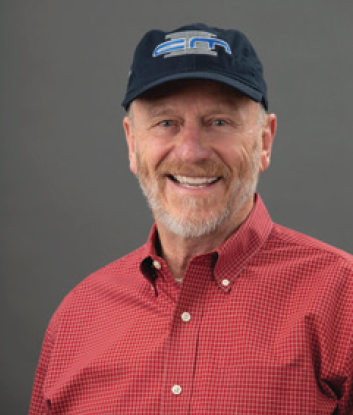
Anchorage Branch
Sales Rep.
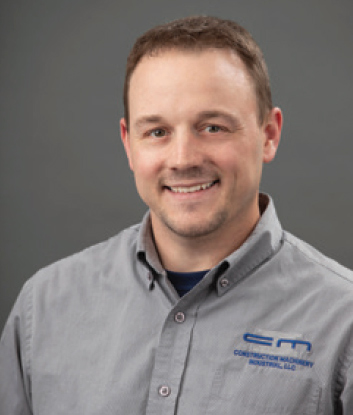
Anchorage Branch
Sales Rep.
Hitachi, the best in construction equipment technology
IN ALASKA
CMI, the best sales and product support lineup
IN YOUR CORNER
The Winning Team
www.cmiak.com
Toll Free (800) 478-3822
Juneau, Alaska (907) 780-4030
Toll Free (888) 399-4030
Fairbanks, Alaska (907) 931-8808
Ketchikan, Alaska (907) 247-2228


Highlights
In the pg. 88 article in the March 2025 issue, “From Survival to Revival,” some information was printed incorrectly: Moose Pad development at Hilcorp’s Milne Point allowed for the operation of 100 wells, not 50; construction on Raven pad is completed, not ongoing; Hilcorp has approximately 1,700 employees, not 1,500; and on pg. 88, the phrase “arrest production decline” was missing the word “decline”. The sentence should read: “[Jill] Fisk says the first thing Hilcorp does after acquiring an asset is arrest production decline to prevent the decline in production from continuing.”
In the pg. 88 article in the March 2025 issue, “From Survival to Revival,” some information was printed incorrectly: Moose Pad development at Hilcorp’s Milne Point allowed for the operation of 100 wells, not 50; construction on Raven pad is completed, not ongoing; Hilcorp has approximately 1,700 employees, not 1,500; and on pg. 88, the phrase “arrest production decline” was missing the word “decline”. The sentence should read: “[Jill] Fisk says the first thing Hilcorp does after acquiring an asset is arrest production decline to prevent the decline in production from continuing.”
About The Cover
Cover Art by Patricia Morales

-
Editorial
Tasha Anderson, Managing Editor
Scott Rhode, Editor/Staff Writer
Rindi White, Associate Editor
Emily Olsen, Editorial Assistant -
PRODUCTION
Monica Sterchi-Lowman, Art Director
Fulvia Caldei Lowe, Production Manager
Patricia Morales, Web Manager -
BUSINESS
Billie Martin, President
Jason Martin, VP & General Manager
James Barnhill, Accounting Manager -
SalesCharles Bell, VP Sales & Marketing907-257-2909 | cbell@akbizmag.comJanis J. Plume, Senior Account Manager907-257-2917 | janis@akbizmag.comChristine Merki, Senior Account Manager907-257-2911 | cmerki@akbizmag.comTiffany Whited, Marketing Assistant907-257-2910 | tiffany@akbizmag.com
-
Contact
akbizmag.com | (907) 276-4373
Press releases: press@akbizmag.com
Billing: billing@akbizmag.com
Subscriptions: circulation@akbizmag.com

From the Editor
s I write, it is currently early March. The federal government has been cutting federal jobs nationwide, including in Alaska, and—to put it mildly—many people have strong opinions about whether this is good or bad. I have one, too! And it will be held safely for a more appropriate space than this letter.
But I mention the employee reductions for a reason. These personnel decisions have led me to view the government in a different way, which is as an employer that competes with other employers for talent.
Government jobs have long benefitted from what I’d consider a generally positive reputation. Every work environment has its pros and cons, but many regard government jobs as steady work accompanied by good benefits. Plus, there’s the advantage of facilitating education or welfare programs, regulating industries to promote environmental or human health, or other aspects of civil service that appeal to many people.



totemaritime.com
Northbound 800.426.0074
Southbound 800.234.8683

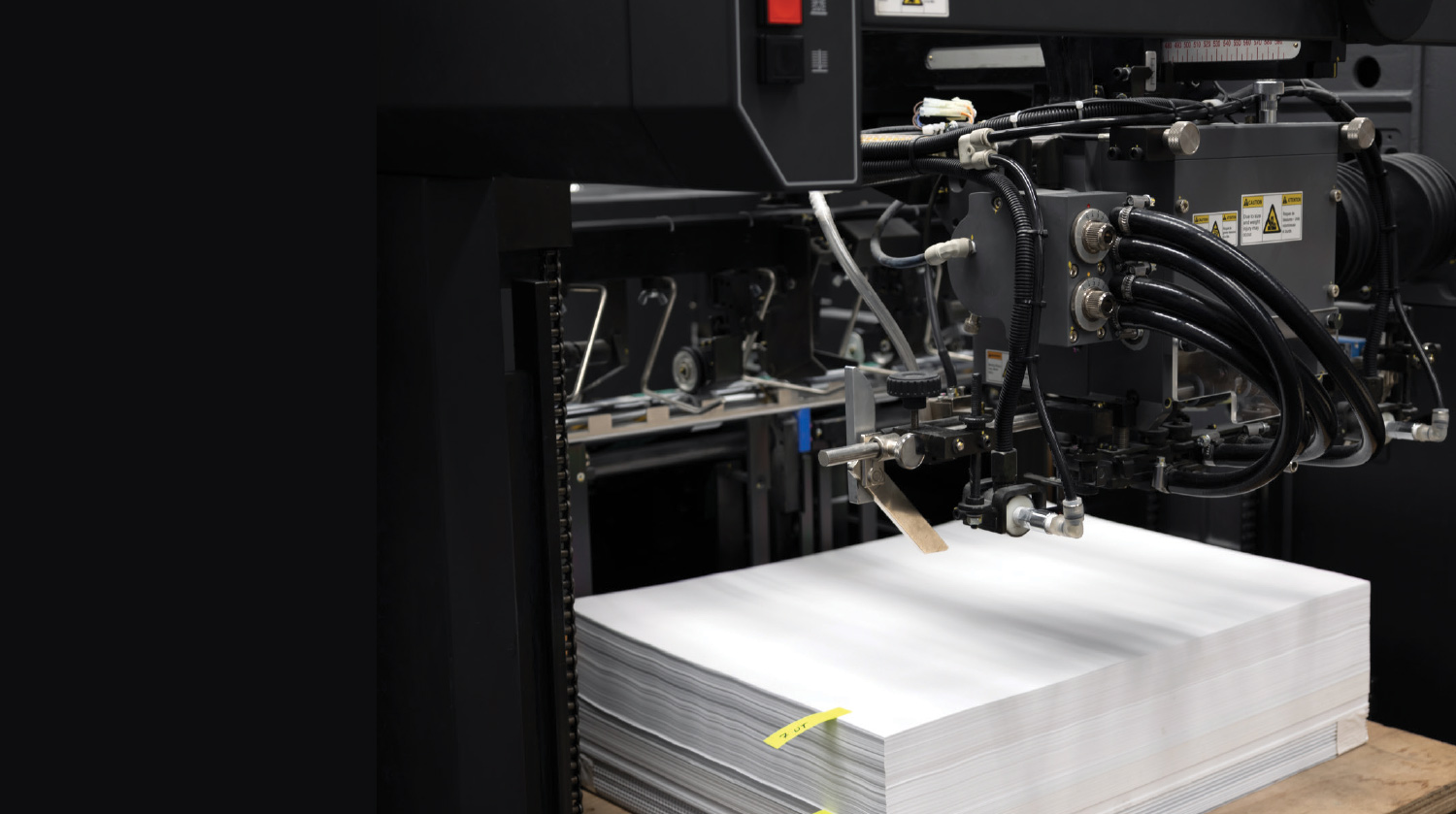
his magazine debuted in January 1985 with 56 pages held together by staples. Apart from the cover, only a couple of pages had color graphics. Full-color photos arrived that April, and the October issue swelled to 84 pages, all for $3 (closer to $9 today, adjusted for inflation). After the statewide economic crash that year, the cover price retreated to $2.50. The first issue longer than 100 pages was published in October 1989.
A glossy magazine of Alaska news published every month (plus a thirteenth issue, the Power List compilation) feels like a luxury when web-based media are displacing printed periodicals. Seeing their readership migrate to online presentations, the Anchorage Daily News (ADN), Juneau Empire, Peninsula Clarion, and Homer News all scaled back printed editions last year. ADN owner Ryan Binkley noted that just 7 percent of approximately 19,000 subscribers interact via print.
orthern Hospitality Group is a multifaceted enterprise that embodies local pride and sustainable growth. The company was founded in 2005 outside Denali National Park and Preserve with a distinct mission: to share Alaska’s authentic beauty and culture with the world. Since then, its corporate umbrella has expanded considerably to include a hotel, three restaurant brands, and a beverage manufacturing facility. Now headquartered in Anchorage, Northern Hospitality Group operates twelve separate entities in Alaska, employing around 750 people annually.
“Our goal was to build a hospitality company—not an individual location,” says CEO David McCarthy, who honed his hospitality expertise in Chicago. “We wanted to create an Alaska-based company that would become iconic and loved by both locals and visitors.”
ueues for car washes in the Anchorage area are longer than they need to be. From that observation, other questions arise. How many more car washes would satisfy demand? Where should those car washes be? What price should they charge?
“We have spent a lot of time and effort, even in the Lower 48, figuring out the best way to analyze markets,” says Tamara Davis, CFO of Wild Pines Ventures. The family-owned company brought the Tommy’s Express Car Wash franchise to Anchorage last year, adding a fourth state to its chain of six locations in Oklahoma, Kentucky, and her home state of Kansas.
The Lower 48 is seeing a boom in car washes, Davis says, more so than in Alaska. But it wasn’t the market opportunity that put Alaska on the family’s radar; it was love. Her daughter-in-law is Alaskan, so Davis has been spending more time in the state visiting relatives. That’s what alerted her to the expansion potential around 2018.
University of Alaska Fairbanks


Support your employees as they enroll in one of UAF’s in-person degree or certificate programs, or a fully online program with UAF eCampus. Empower them to get one step closer to their career goals — on their schedule, wherever they are.
Why Partner with UAF?
- 10% tuition discount for eCampus courses.
- Online degrees with flexible schedules for rotational workforces.
- Accredited education from anywhere in the world.
- Customize full or partial payment plans for employees.
www.uaf.edu/corporate-partnerships/
UAF is an affirmative action/equal opportunity employer, educational institution and provider and prohibits illegal discrimination against any individual: www.alaska.edu/nondiscrimination/.01/2025

The Meeting:
September 21-24, 2025
400 Delegates
Estimated Economic Impact: $754,933.02
Troy LaRue,
Meeting Champion
With Anchorage as a hub for aviation innovation and 82% of Alaska’s communities relying on air travel, the convention offers a key opportunity to educate FAA and regulatory officials on the state’s distinct airport structures. The conference will foster collaboration, industry connections, and discussions on aviation policy and advancement in technology.

The Meeting:
September 21-24, 2025
400 Delegates
Estimated Economic Impact: $754,933.02
With Anchorage as a hub for aviation innovation and 82% of Alaska’s communities relying on air travel, the convention offers a key opportunity to educate FAA and regulatory officials on the state’s distinct airport structures. The conference will foster collaboration, industry connections, and discussions on aviation policy and advancement in technology.
Are you a member of an association?
Contact Visit Anchorage to bring your group to town:
meetings@anchorage.net | 907.276.4118


emand for medical project financing is growing in Alaska, with financial institutions reporting increased loan requests from medical facilities, surgery centers, dental practices, and other healthcare businesses. Various factors contribute to this trend.
For instance, payment delays from insurance providers can place a financial strain on medical establishments, according to Melissa Reiser, senior healthcare lending officer at First National Bank Alaska. And staying current with new medical technologies and addressing the healthcare needs of Alaska’s growing aging population require significant investment.
Medical practices are also looking to enhance operations by acquiring new equipment, including adopting AI tools to improve patient care or streamline administrative tasks. “Securing equipment loans is crucial for practices to stay at the forefront of medical technology and provide high-quality patient care,” Reiser says. “Additionally, medical equipment costs can trend high, particularly for specialized items like PET [positron emission tomography] scanners and imaging machines. We are also seeing a significant increase in the number of surgery centers being established to meet the growing healthcare needs of Alaskans.”



hysicians in training choose a specialty for their final year of medical school. After sampling fields ranging from obstetrics and pediatrics to psychiatry and surgery during clinical rotations, medical students audition for residency positions during sub-internships. This is the time to discover a passion that will guide the physician’s career.
Whether a medical specialty is available in a community, therefore, is partly up to the whim and fancy of the youngest doctors. In rural Alaska, even general physicians might be several hours away from where people live, and urban residents may find themselves traveling Outside to receive specialized care.
In some specialized areas, though, Alaskans have the home advantage. Thanks to one doctor who has dedicated his career to addressing hearing loss, and one hospital program working to help families of infants born with substance abuse withdrawal, Alaskans have access to some of the best specialized care in the nation.



Looking at the full cohort, all of Alaska’s major industries are represented—from food to financial services—including for profit, not-for-profit, and nonprofit organizations. This year, as a group, the Corporate 100 employ 73,175 Alaskans and more than 3.7 million people around the world. Upwards of 70 percent of the Corporate 100 are companies that started in Alaska; the other 30 percent launched their operations elsewhere in the world and moved into the Alaska market. Approximately 70 percent of the list has been in operation for more than fifty years, and of those the oldest is Wells Fargo, founded in 1852 and with roots in Alaska in 1916.

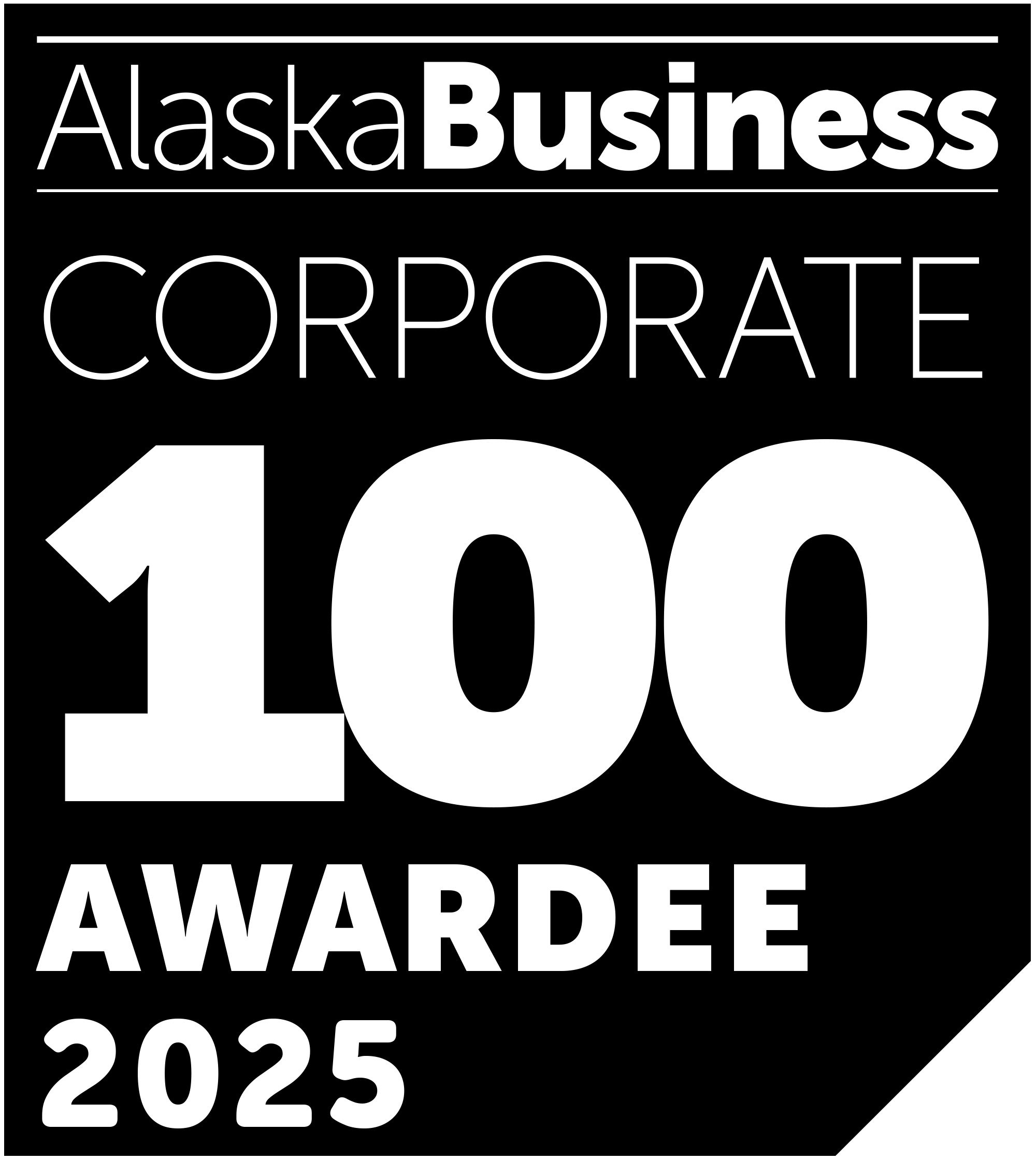


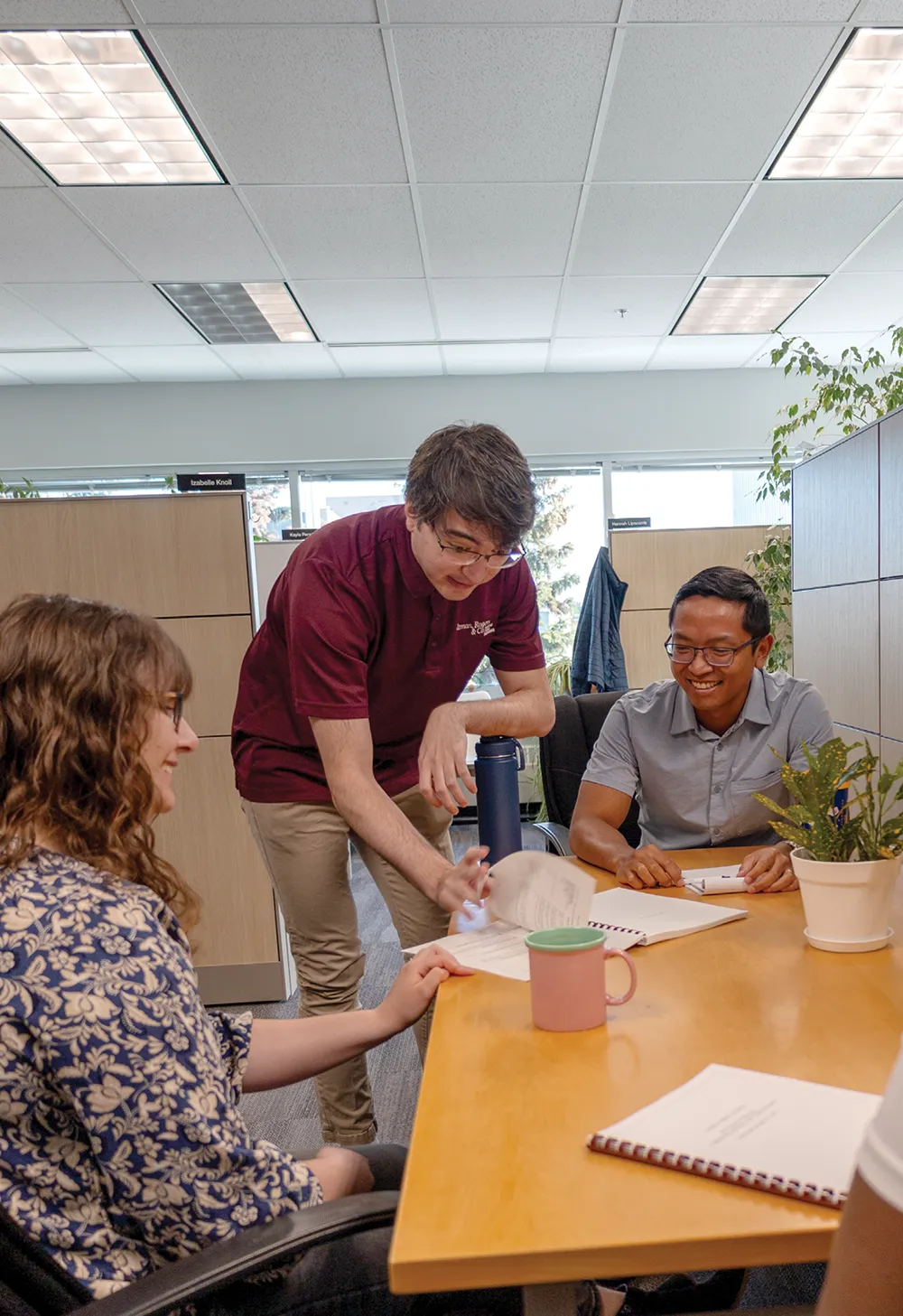
very year, Alaska Business asks its readers to vote on the Best Place to Work as part of its Best of Alaska Business special section and awards. While there are no set criteria, voters consider businesses that go above and beyond in fostering an outstanding workplace environment.
The award is split into two size categories: employers with more than 250 people on the payroll and those with fewer. Far more organizations are eligible for the smaller category, yet Altman, Rogers & Co. consistently stands out as the big fish in that pond.
Local Roots, National Reach


he concept of employee engagement is a familiar one, as are the positive impacts of high employee engagement on the bottom line. Engaged employees are more productive, have lower absenteeism, provide better customer satisfaction, perform their work more safely, and the list goes on. High employee engagement is the key to a healthy organization, isn’t it?
Highly engaged employees are still willing to take that phone call from the recruiter about opportunities at other companies and may even spend their lunch hours searching for a job that offers them something they aren’t getting in their current workplace. That is, engaged employees with a low level (or the wrong type) of commitment to the organization will keep their options open.

lare is a mid-level employee at a large Alaska corporation. She’s been dependable during her seven years with the company, but recently she’s been calling in sick a lot, less interested in tasks she previously enjoyed. She seems withdrawn during team meetings, with trouble concentrating and managing multiple tasks. You’ve heard that last year she went through a difficult divorce and has been taking care of an aging parent. As her employer you might ask how you can promote and prioritize employee well-being, which affects your organization’s productivity, turnover, absenteeism, and work culture.
The words “mental health” are frequently misconstrued as a problem to fix, and the mental health field is often characterized as the diagnosis and treatment of mental illness like depression, anxiety, bipolar disorder, and schizophrenia. When mental health is framed as a continuum, much of the attention goes to the illness portion of the scale.
Come
together



Events | Concerts | Conferences | Conventions | Banquets | Meetings | Trade Shows | Weddings | In-house Catering | Equipment Technology
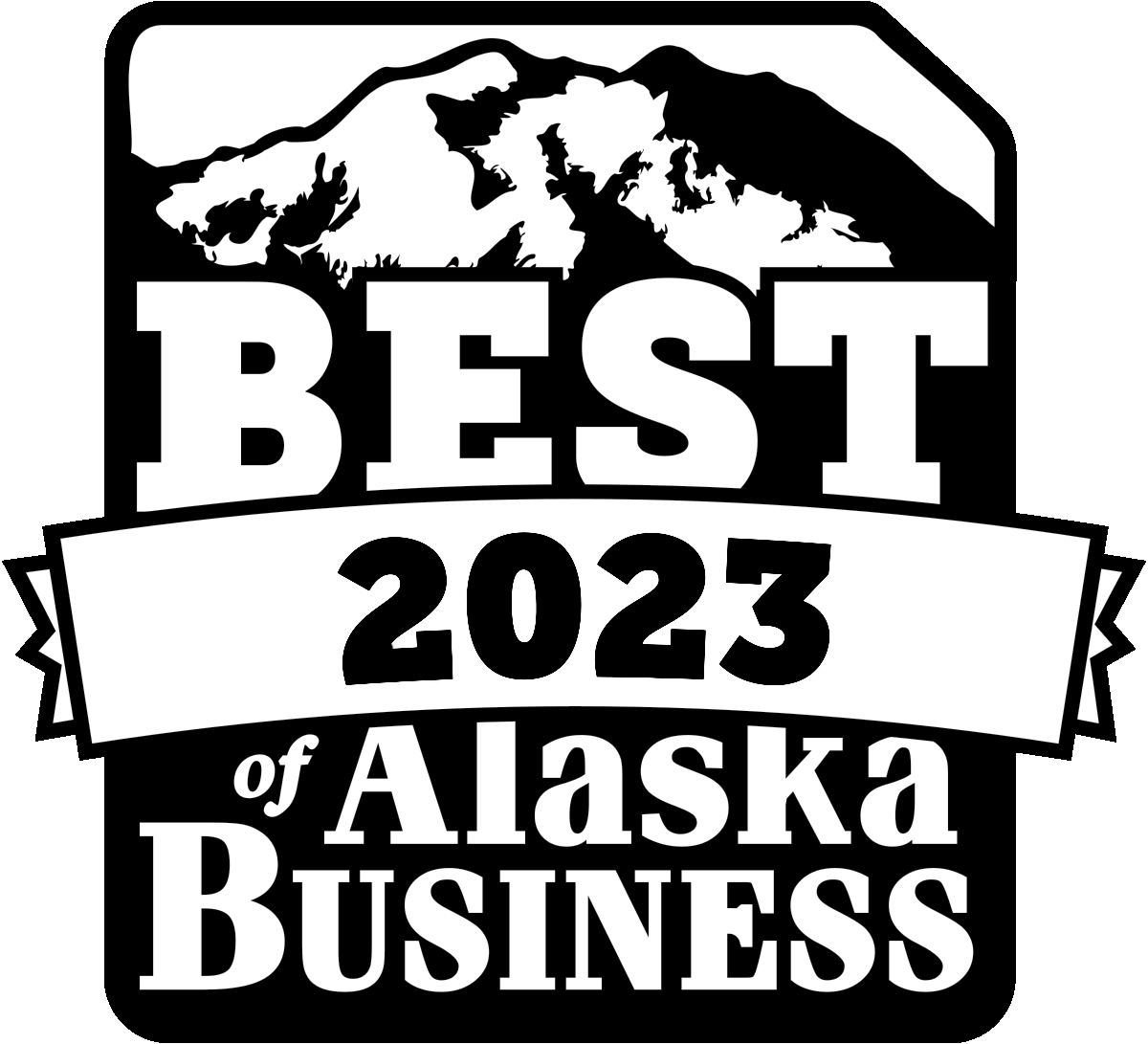
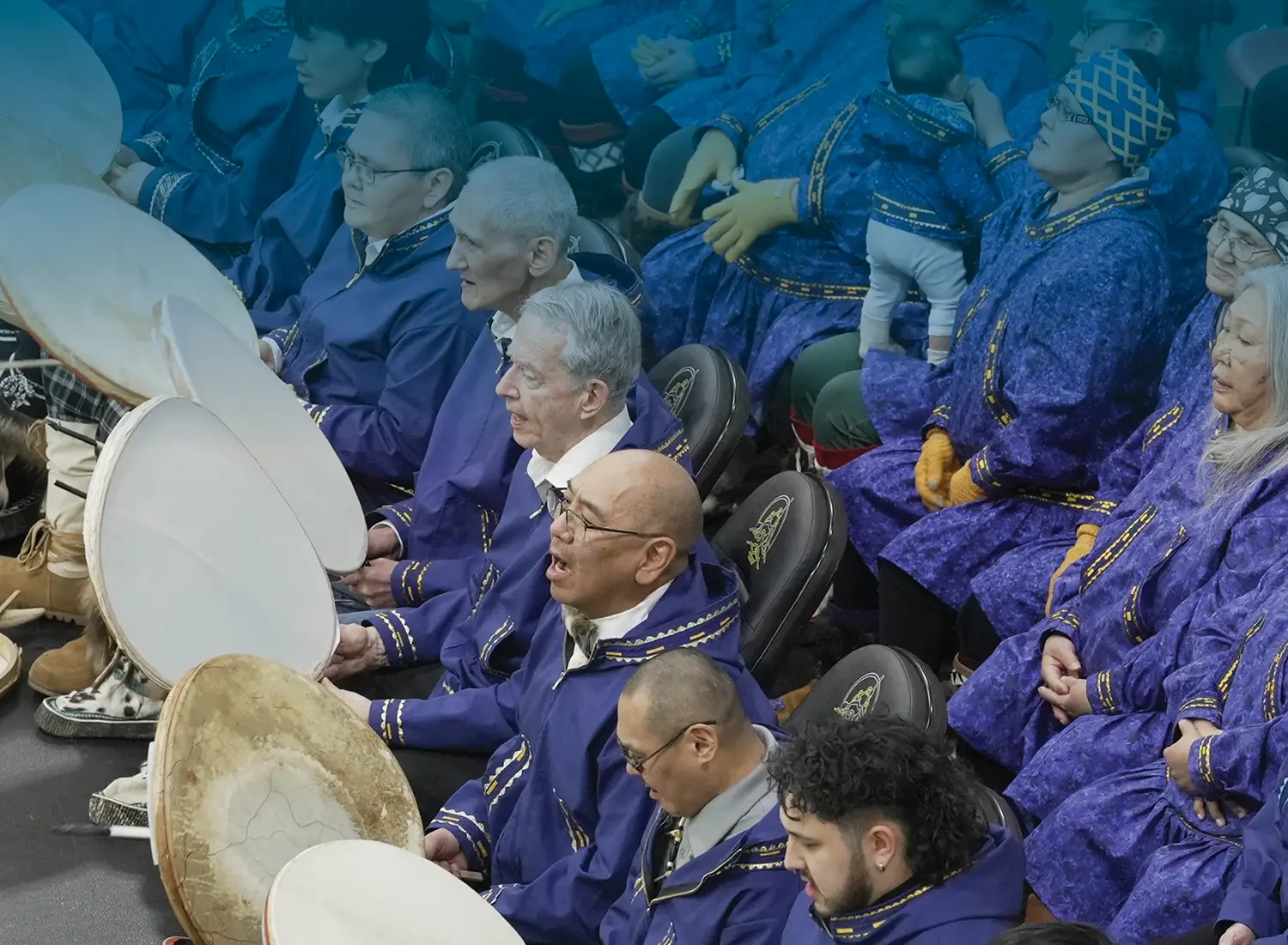


ast November, 183,744 Alaskan voters approved Ballot Measure 1, amending Title 23 of Alaska statutes to secure favorable wages and benefits. In a few short months, Ballot Measure 1 goes into effect, increasing Alaska’s minimum wage, establishing sick leave for most employees, and altering certain mandatory meeting requirements. By July 1, businesses will need policies and processes in place to ensure they comply with the new law.

Call today.

laska businesses have out-of-state workers on the payroll for any number of reasons. For instance, a company might need certain expertise that is not available from a resident of the 49th State. Or a resident might move away while remaining on staff.
Outside employees make up a subset of remote workers. According to the US Census Bureau, the number of people working remotely tripled between 2019 and 2021 to 17.9 percent of the workforce. By the end of 2024, roughly one in five American workers were still signing in from home, with one in ten working remotely full-time, according to a Stacker analysis of federal survey data.
Employing a resident of another state must be worth the added complications. For businesses—especially the tax and payroll departments—the rapid increase in worker mobility across multiple states (and even countries) has brought new compliance risks, expanded tax liabilities, and additional reporting requirements.


eadership isn’t a simple task on a good day. When external stressors like a global crisis, unexpected illness, or unanticipated economic or policy shifts enter the picture, what seems manageable quickly becomes overwhelming. As business owners, leaders, and entrepreneurs, the pressure to make clear decisions, inspire your teams, and maintain steady progress during unpredictable times can feel like an insurmountable weight. These challenges are an inevitable part of life and business and what matters most is how you choose to navigate them.
Whether your business is facing financial hardship, a major market shift, or an unforeseen crisis, the key to resilience is staying focused on what you can control, adapting to the environment around you, and leading with clarity and purpose. Your actions now, in times of uncertainty, will define your future success.
First, acknowledge where you are. What are the challenges you are facing right now—not what you think might happen in the coming months or years, but right now? Write them down. Then circle the things that are in your control and focus solely on those. Time and energy are valuable; don’t waste them on external circumstances that you cannot influence. This focus will give you the clarity to act purposefully and efficiently.
n 2022, BDS Architects celebrated forty years of business as a leader in the design community, and for the entirety of that history, BDS made a nondescript office building in Midtown Anchorage our residence. Generally, the space functioned as an architecture office; there was a conference room, open office space, tiny kitchenette, and offices. Over the years, fun and character had been lovingly applied to our space in the form of Christmas lights and joke-laden whiteboards. But in 2024, we decided that we were ready for a change. BDS had new leadership, new skilled talent, and we were ready to make a fresh start with a new office space that reflected who we are now and what we value in a multi-generational workspace.
The first task was for BDS Architects to learn how to be our own client. As a design firm, BDS is filled with creative people who care about built space, resulting in lots of opinions about what the new office could be. With so many exciting options, we had to pause and ask ourselves, “What were we trying to accomplish by moving?” Organizing our collective answer to this question became our guiding design statement: to improve the lives of our current and future employees.
hose pesky salespeople.” Does that thought run through your head when you get a call? It does for me too, at times—and I’m in sales! The truth is, at one time or another we all try to sell things, and we’ve done it since we were children, whether we were convincing our parents to buy us a toy or persuading our friends to play the game we wanted: sales is just a part of life.
If your conversations with clients focus mainly on goods and services or price, you miss out on deeper connections. Traditional transactional selling is a one-time focus. Relationship selling, conversely, fosters a partnership where both parties gain.
As Rob Reid from Sheet Metal Inc. explains, “The days of handshake and bar napkin deals are, for the most part, a thing of the past. However, a person’s word still carries weight, with ‘saying’ and ‘doing’ being worlds apart. In my opinion, the values and benefits of marketing yourself and the brand you represent start with being genuine and delivering on your word. Being personable and reliable sells! By being so, clients and associates see honesty, trustworthiness, and loyalty, not only to them but to your brand as well, and this approach has allowed me to create and retain multiple long-lasting relationships.”
Dennis Stacy
s Alaska continues to grapple with a housing shortage, multi-family property loans are crucial to prospective investors and individuals seeking a path to affordable homeownership.
The multi-family lending environment has remained much the same for properties with five or more units, according to Eric Hamilton, a commercial real estate loan officer with Northrim Bank. But there have been some changes related to financing for one- to four-unit residential properties, including more relaxed down payment requirements with some federal programs.
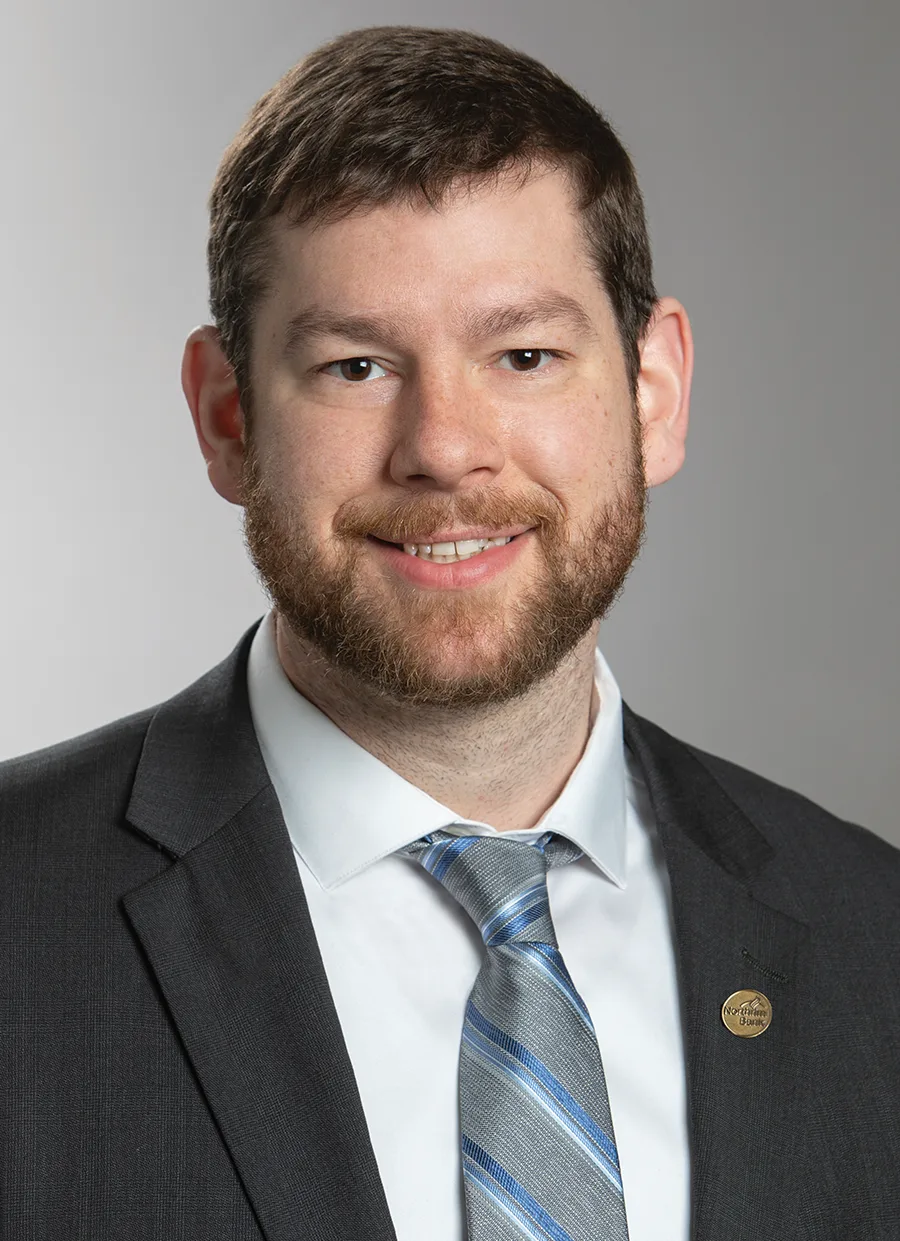
Northrim Bank
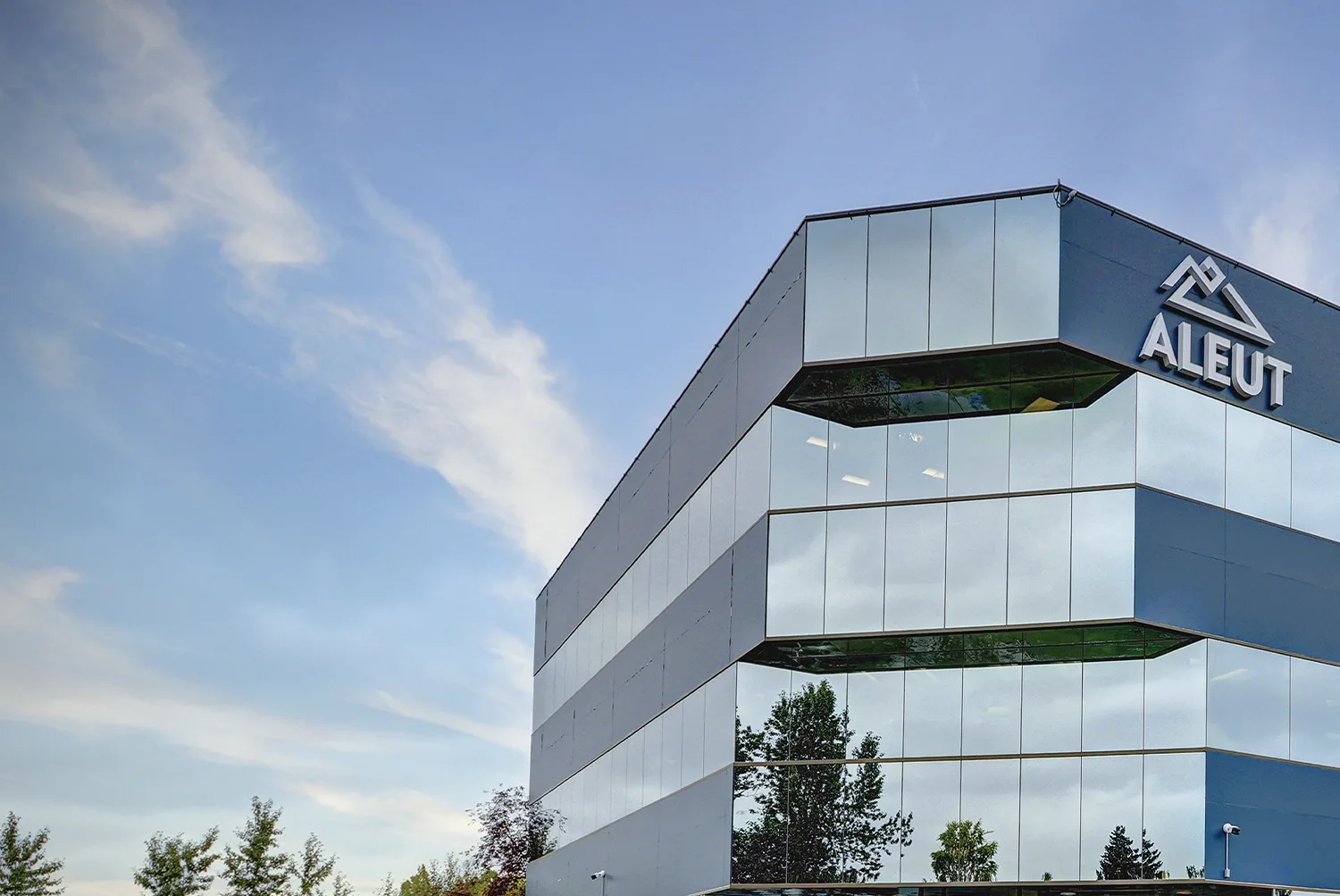
new player is making waves in the competitive world of commercial real estate. Tayal Brokerage is bringing a fresh perspective to the market by combining top-tier real estate services with a deep commitment to community reinvestment.
Aleut regional corporation launched the new subsidiary late last year. “Tayal,” which means “to buy” in Unangam Tunuu (Aleut), was carefully chosen through collaboration with elders. The company’s logo, a double-bladed paddle, or haasix, carries cultural significance too.
“We were very thoughtful about choosing the right name for this company,” explains broker-in-charge Mike Jenks. “It was important for us to honor our Unangâx heritage through Tayal’s brand. The double-bladed paddle symbolizes balance and forward movement; those are the values that drive our brokerage’s approach to serving both clients and community.”
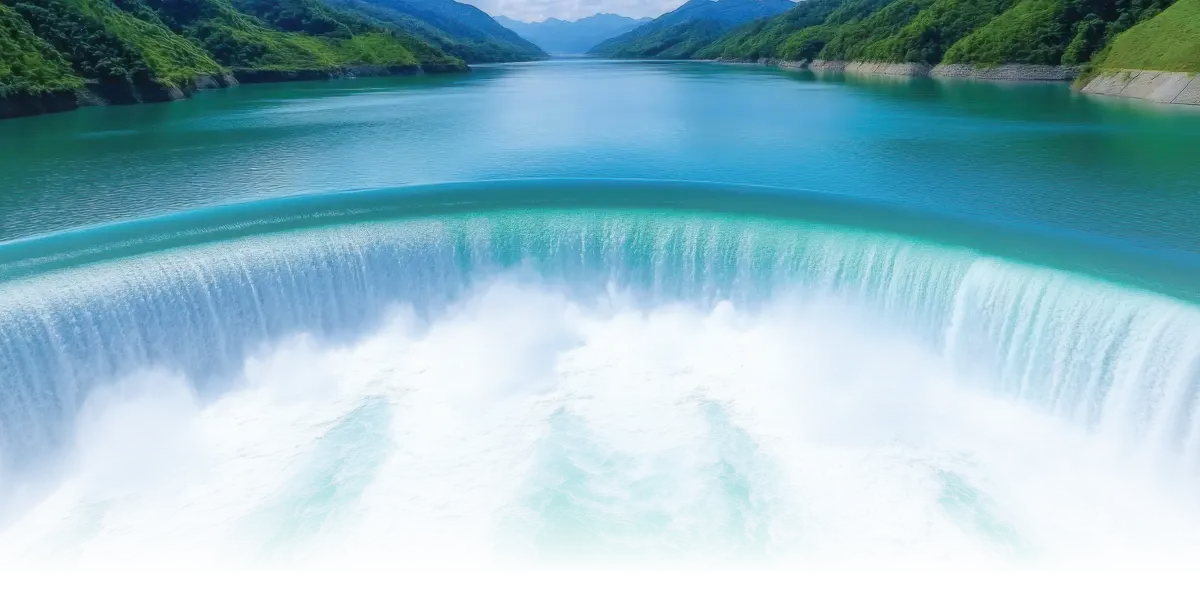
he Nuyakuk River Hydroelectric Concept is a proposed run-of-river hydroelectric development that aims to deliver electricity and enhanced broadband access to six northern Bristol Bay communities: Aleknagik, Dillingham, Ekwok, Koliganek, Levelock, and New Stuyahok. The project site is at Nuyakuk Falls, approximately four miles downstream of Tikchik Lake on the Nuyakuk River within Wood-Tikchik State Park, and will occupy 357 acres of US Bureau of Land Management land.
The project would consist of an intake structure, power conduit, powerhouse forebay, powerhouse, and tailrace channel approximately 4.5 miles downstream of the Tikchik Lake outlet above a natural waterfall on the Nuyakuk River. The project’s river intake would divert water from the Nuyakuk River above Nuyakuk Falls to a powerhouse near the base of the falls.
Based on more than sixty years of federally sourced site-specific flow data, the run-of-river project could produce up to 12 MWh year-round. The seasonal generation capacity matches, or exceeds, the demand for power in the six communities and would replace up to 1.5 million gallons of diesel fuel each year.
Genuine Alaska Pollock Producers
hen the National Marine Fisheries Service (NMFS) shut down the Central Gulf of Alaska pollock season weeks before the season’s end in October 2024, after two vessels incidentally hauled in around 2,000 Chinook salmon as bycatch, it sent shivers through the industry. NMFS figured 50,000 tonnes of the pollock quota were not landed.
This month, pelagic trawlers, which use a cone-shaped net to catch fish at greater depths, return to homeports with holds filled with fish after receiving a boost in Bering Sea catch limits to 1.375 million tonnes, a 6 percent hike over 2024, and with fisheries in the Gulf of Alaska allowed to target 171,000 tonnes in its 2025 season, according to the North Pacific Fisheries Management Council (NPFMC).
The pollock “A” season, which runs annually from January 20 to April 30, and “B” season running from June 10 to October 31 in the Bering Sea and September 1 to November 1 in the Gulf of Alaska, deeply impact the economies of Unalaska, Kodiak, and small fishing communities throughout Alaska. With last year’s bycatch-related shutdown out of the way, one of the world’s largest fish harvests can resume.
ald eagles, snowy owls, Steller’s jays, and willow ptarmigan. Sandhill cranes, red-faced cormorants, emperor geese, and bristle-thighed curlews. The list of birds that live in or migrate to Alaska’s wetlands, coastal areas, and public lands, such as national wildlife refuges and national parks, is long—and so is the distance that birdwatchers from around the world travel to see them.
“Birding is big business in Alaska because of the healthy, resilient public lands and waters of our state,” explains David Krause, Alaska vice president of the National Audubon Society. “These places offer a bunch of different habitat types and, as a result, allow for a rich diversity of bird species.”
In 2022, Audubon Alaska released the study Small Sight—Big Might: Economic Impact of Bird Tourism, which tracked the economic impact of birding tourism. It found that more than 300,000 birdwatchers visited the state in 2016, spending $378 million and supporting 4,000 jobs.
ith a warmer-than-normal winter and an early construction season, Alaska contractors are already preparing for a busy building season. According to the January edition of Alaska Economic Trends, the construction sector added 2,000 jobs in 2024, and the Alaska Department of Labor and Workforce Development’s forecast for 2025 predicts an additional 1,500 jobs.
This growth is driven by several factors, including the acceleration of oil project development on the North Slope, statewide mining operations, federal Infrastructure Investment and Jobs Act funding authorization, and commercial and residential building projects across the state. Alaska is set to receive $1 billion over five years for Broadband Equity Access and Deployment, a nationwide initiative aimed at providing high-speed internet access to every American. In addition, Senator Dan Sullivan secured $723.3 million in military construction authorizations for upgrades to several military bases in Alaska, including Joint Base Elmendorf-Richardson, Eielson Air Force Base, and Fort Wainwright.
This will make for a very busy construction season for Alaska contractors, which is a positive development for the state. Commercial insurance, specifically builder’s risk insurance, is at the heart of many of these projects.
Anchorage, AK 99507
www.materialflow.com
“When you’re doing a move, your house is always going to be messy,” she says. “People hire me because they really need the help, and I want to help.”
Webster started Declutter to Move in 2019, and now she helps eight or nine clients per month during peak season, often seniors downsizing homes.
Part 29 of an ongoing video series.

 Elizabeth Hall is promoted to President. Growing up in the motorcoach industry, Hall has played an integral role in expanding the company into new sectors, such as global tour offerings with World Adventures. Hall earned bachelor’s and master’s degrees in business administration and has been COO since 2011.
Elizabeth Hall is promoted to President. Growing up in the motorcoach industry, Hall has played an integral role in expanding the company into new sectors, such as global tour offerings with World Adventures. Hall earned bachelor’s and master’s degrees in business administration and has been COO since 2011.Alaska Trends
he Alaska Department of Labor and Workforce Development and its team of hard-working economists supply multiple, rich datasets. The Research and Analysis Section tracks demographics, employment, consumer prices, workplace injuries, and other data. But the most relevant this month topic is one bubbling under several other articles in this issue: Alaska housing information.
Tracy Barbour reports on “Multi-Family Property Loans.” Alexandra Kay profiles “Tayal Brokerage,” Aleut’s new real estate subsidiary. And the latest episode in the video series This Alaska Business spotlights Declutter to Move, a residential organizer who specializes in helping clients pack up and relocate their households.
Either a good bottle of wine or a good bourbon.
What vacation spot is on your bucket list?
Slovenia to do some hiking [for his 25th wedding anniversary next year].
What book is currently on your nightstand?
A Farewell to Arms by Ernest Hemingway. It’s based in Northern Italy and Slovenia, where we’re planning to go.
What do you do in your free time?
As much as I can with family, but I really enjoy playing hockey.
If you could domesticate a wild animal, what animal would it be?
A bald eagle. I’m a big Philadelphia Eagles fan.
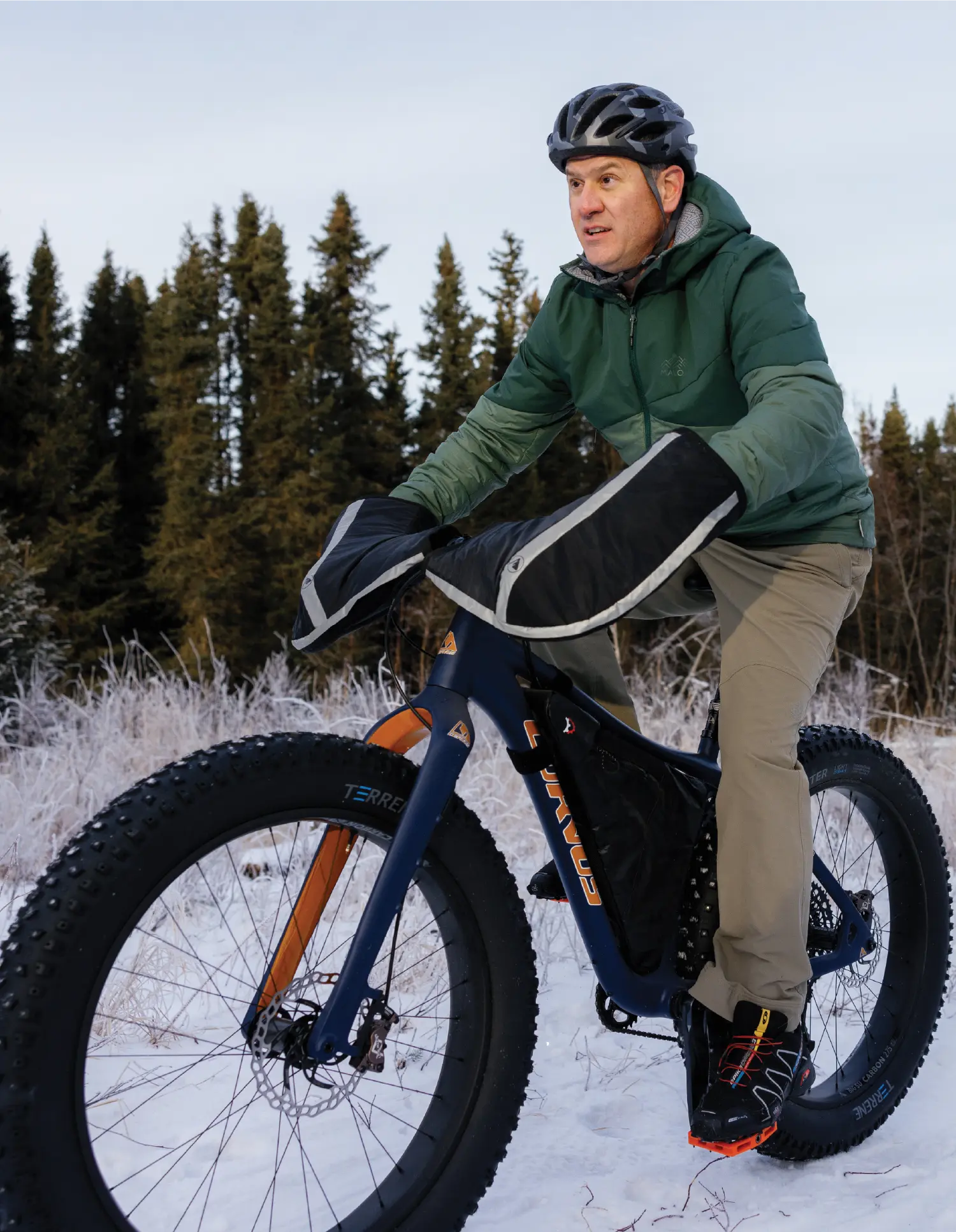
Either a good bottle of wine or a good bourbon.
What vacation spot is on your bucket list?
Slovenia to do some hiking [for his 25th wedding anniversary next year].
What book is currently on your nightstand?
A Farewell to Arms by Ernest Hemingway. It’s based in Northern Italy and Slovenia, where we’re planning to go.
What do you do in your free time?
As much as I can with family, but I really enjoy playing hockey.
If you could domesticate a wild animal, what animal would it be?
A bald eagle. I’m a big Philadelphia Eagles fan.
Off the Cuff
eading one of Alaska’s most prosperous Native corporations might’ve seemed obvious for Jason Metrokin. He holds shares of Bristol Bay Native Corporation (inherited from his grandfather), while his father was president at Koniag regional corporation. Yet Metrokin applied his studies in business and marketing at National Bank of Alaska at first. “I didn’t pursue this as a career per se,” he admits, “but it was maybe a logical (unplanned) career move.”
When he became Bristol Bay CEO in 2009, Metrokin learned to appreciate the variety that comes with the job. He explains, “Engaging with the CEO of the Seattle Kraken one day, talking to school kids in the village of Manokotak the next, engaging in a new acquisition opportunity, or talking to employees in Jacksonville, Florida. Or moose hunting with the board chairman.”
- 2 Mobius Technology Solutions, Inc.
- 3-Tier Alaska
- Airport Equipment Rentals
- Alaska Mergers & Acquisitions, LLC
- Alaska Pacific University
- Aleut Corporation
- Alyeska Resort
- American Heart Association
- Anchorage Chrysler Dodge
- Anchorage Convention Centers
- Arctic Slope Telephone Assoc.
- Bettisworth North
- Bristol Bay Native Corporation
- Chugach Alaska Corporation
- Color Art Printing, Inc.
- Colville, Inc.
- ConocoPhillips Alaska
- Conrad-Houston Insurance Agency
- Construction Machinery Industrial
- Cook Inlet Tug & Barge Inc.
- Craig Taylor Equipment
- Cruz Companies
- Davis Constructors & Engineers Inc.
- Davis Wright Tremaine Llp
- Denali Commercial
- Denali Universal Services
- DesertAir Alaska
- First National Bank Alaska
- GCI
- Global Credit Union
- Hotel Captain Cook
- Huna Totem Corporation
- IMA Financial Group
- Junior Achievement
- Lennon Crane & Equipment Company
- LONG Building Technologies
- Lynden
- Material Flow & Conveyor Systems, Inc.
- Matson Inc.
- Mike Green Leadership
- Nana Regional Corp
- Nenana Heating Services, Inc.
- Northern Air Cargo
- Northern Air Cargo
- Northern Hospitality
- Northrim Bank
- Nuvision Credit Union
- Oxford Assaying & Refining Inc.
- Petro Marine Services
- PIP Marketing Signs Print
- Providence Alaska
- Samson Tug & Barge
- Span Alaska Transporation LLC
- Stellar Designs Inc.
- Structured Communication Systems
- Subway of Alaska
- T. Rowe Price
- The Alaska Club
- The Odom Corporation
- Think Office
- TOTE Maritime Alaska LLC
- Trident Seafoods
- UAF Corporate Enrollment
- Ukpeagvik Inupiat Corporation
- Umialik Insurance Company
- United Way of Anchorage
- Visit Anchorage
- Western Pacific Crane & Equipment
- Yukon Equipment Inc.
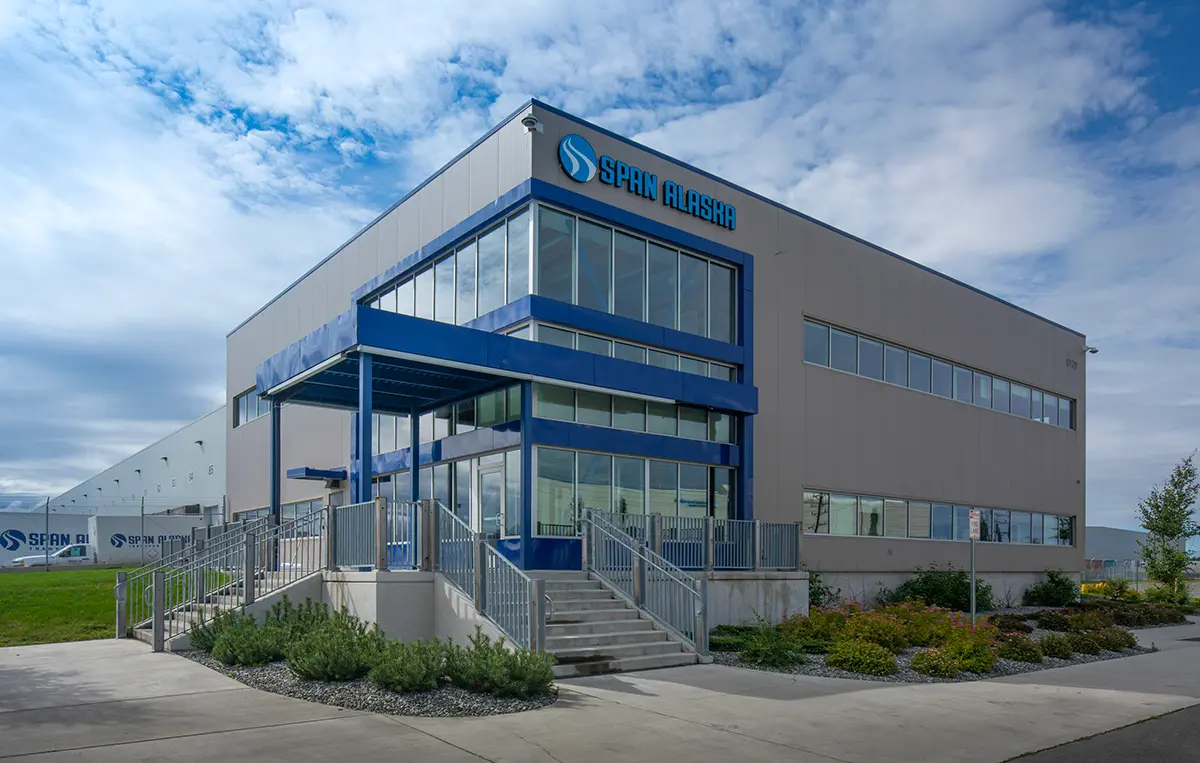
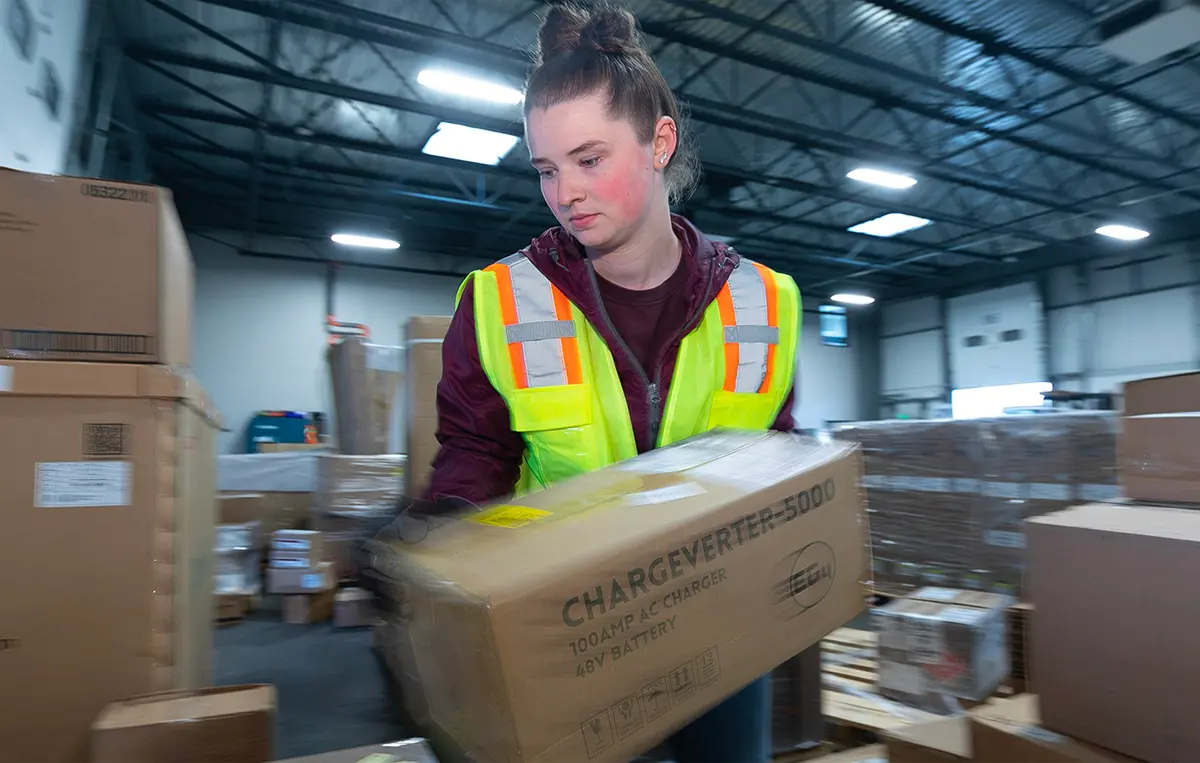
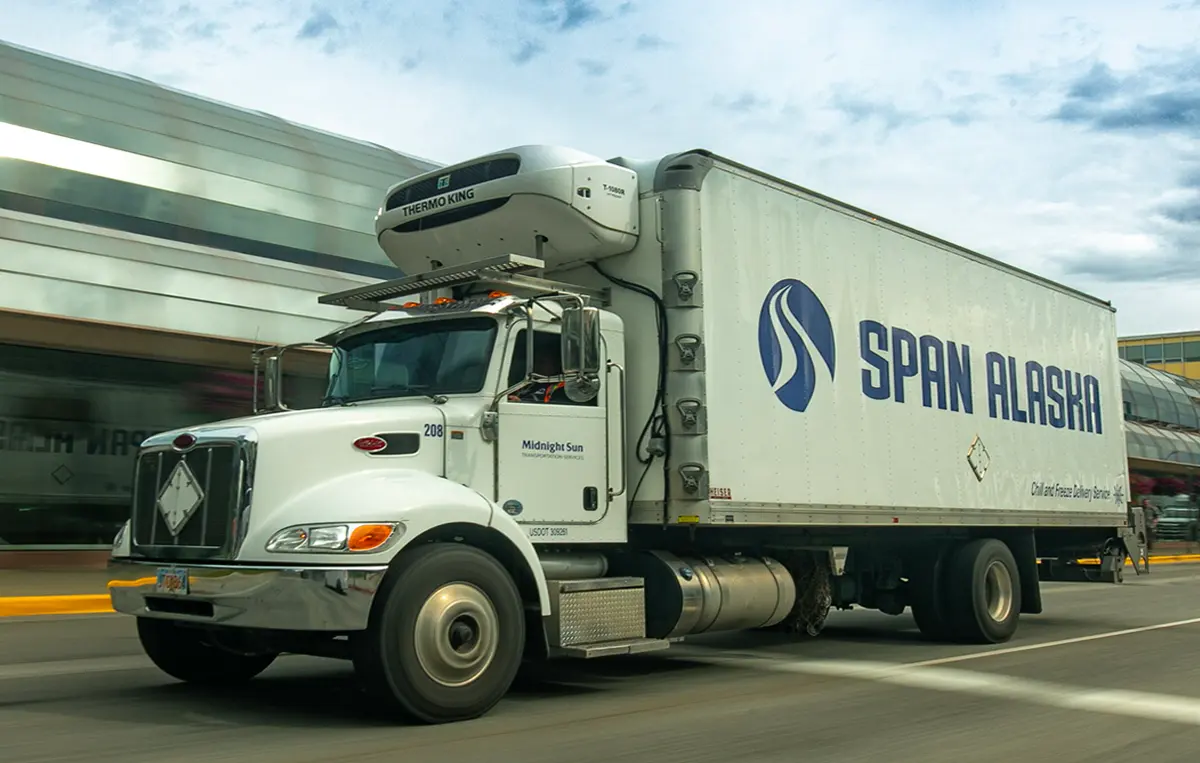


At our West Coast Consolidation Center, we load your products into dedicated containers that transit directly to one of six service centers or air cargo facility for final-mile delivery. This eliminates extra rehandling and costly delays.
- Year-round weekly ocean transit in all conditions
- LTL, FTL, Chill/Freeze, and Keep From Freezing Protection options
- Specialized equipment for project, oversized, and hazardous material loads
- Delivery throughout Alaska, from metro Anchorage to North Slope to remote villages in the Bush
- Customized solutions for commercial and industrial sectors, including oil and gas, construction, F&B, and retail/tourism
Consolidation Centers: Auburn WA • Chicago IL
Alaska Service Centers: Anchorage • Fairbanks • Juneau • Kodiak • Soldotna • Wasilla

907.456.2000
907.522.6466
907.659.2000
907.895.9898
907.474.2000
907.335.5466
Fairbanks
907.456.2000
Anchorage
907.522.6466
Prudhoe Bay
907.659.2000
Delta Junction
907.895.9898
The Rental Zone
907.474.2000
Kenai Peninsula
907.335.5466



